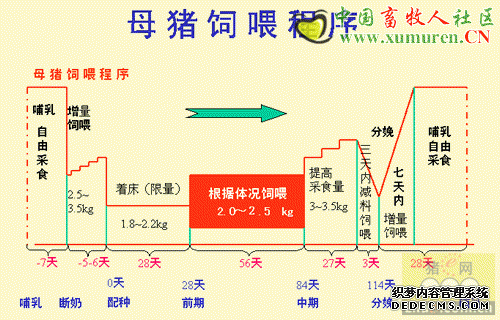In addition to the potential pigs have as the mixing vessel for mammalian and swineviruses, there have also been numerous reports of human infection with swine viruses.Although some of these infections have been fatal23,25 the infections have all been selflimiting and there has been little or no human-to-human spread.
Current strains of influenza in swine
Since the first influenza virus was isolated from a swine in 1930, only two HA (H1 andH2) and two NA (N1 and N2) subtypes have formed stable lineages in swine populations.Reports appear sporadically that describe other subtypes infecting swine, such as H1N7,5H4N6,14 and H9N2,24 but these events have so far remained isolated cases and none havebecome established in swine populations. Endemic influenza in swine is restricted tothree subtype combinations: H1N1, H3N2, and H1N2. Although only three establishedviral subtype combinations are found, the different geographical populations arereservoirs for a much larger number of distinct viral lineages.
Classical-swine H1N1, which is phylogenetically related to the virus responsible for the1918 human Spanish flu pandemic, circulates predominantly in North America andAsia.20 In Europe, H1N1 viruses also circulate, but this lineage is derived from a whollyavian-like virus that was first detected in the pig population in 1979.22 This virussuperceded the classical-swine viruses circulating at the time and is the current H1N1throughout Europe. In addition a distinct lineage of avian H1N1 virus has been reportedin China, although it is uncertain to what degree, if at all, it has spread.10
H3N2 viruses were first detected in swine in 1970, shortly after the emergence of similarviruses in humans.17 Since this time, human-like H3N2 viruses have been isolated fromswine throughout Europe, Asia, and the Americas and analogously to the situation inhumans these viruses continue to cocirculate with H1N1 viruses in most parts of theworld. For reasons unknown, H3N2 viruses did not emerge in the United States swinepopulation until late 1998. The gene segments of these viruses, which have since becomeestablished, are of mixed origin and contain human virus (HA, NA, PB1), swine virus(NP, M, NS), and avian virus (PA and PB2) genes.30
Reassortant H1N2 viruses of different lineages have been identified in various swinepopulations and are becoming more prominent. A reassortant H1N2 virus containingavian-like swine and human genes has become a significant problem in the UnitedKingdom, and this virus seems to have now spread to continental Europe.4,27 ReassortantH1N2 viruses derived from classical H1N1 and various H3N2 viruses also have beenisolated in France, Japan, and the United States.9,15,26
Recent evolution of swine influenza viruses
Historical dogma has us believe that swine viruses do not evolve as quickly as humanviruses. In addition, it seems that viruses can be maintained for prolonged periods inswine without any marked change in antigenic structure.2,21 Many consider this reduceddrift rate to be due to the continual availability of immunologically naive animals inswine populations. The lack of immunologic pressure means that changes in the swineHA tend to be evenly distributed throughout the HA molecule, whereas changes inhuman virus HA genes frequently occur at or around antigenic sites.3 Although thereduced antigenic drift in swine may historically be true, recent events in both Europeand North America demonstrate that the swine populations of the world are becomingreservoirs for a very genetically diverse pool of viruses.
Recent influenza activity in European swine populations includes reassortment betweenH1N2 and H1N1 and/or H3N2 viruses, the isolation of antigenically distinct H1N1viruses, and the isolation of contemporary human-like H3N2 viruses.18 Sequence analysisof HA genes has shown that antigenic drift does occur in both European H1N1 and H3N2viruses of swine6,8 raising concerns from some investigators that vaccines in swine mayneed to be continually updated as in human populations. Heinen and colleagues11 haveshown, however, that vaccination with A/Port Chalmers/1/73 (H3N2) was sufficient tostop the development of fever and transmission upon challenge with a recent field strain.
The vaccine was not able, however, to completely stop viral shedding from thechallenged animal. Similar studies with the European H1N1 viruses have revealed similarresults in that heterologous virus vaccination can protect from clinical disease and reduceviral load although not viral replication.28
Similar levels of viral reassortment have been recently identified in the U.S. swinepopulation. Prior to the emergence of H3N2 viruses in 1998, swine influenza in theUnited States was caused exclusively by H1N1 viruses. By the end of 1999, H3N2viruses had spread throughout the United States. Of particular concern was theidentification of three antigenically distinct virus groups, each having a different HAgene obtained from contemporary human H3 viruses.29 Shortly after the identification ofthe H3N2 viruses the first generation of H1N1/H3N2 reassortments were identified.15These reassortant viruses were H1N2 viruses containing seven H3N2 genes and the HAfrom a classical H1N1 virus. H1N2 viruses have continued to spread and phylogeneticanalysis suggests that multiple independent reassortment events have resulted in theirgenesis. A further reassortment event between the H3N2 and H1N1 viruses has resultedin the emergence of yet another variant of virus. These viruses contain the HA and NA ofthe classical swine virus but all other genes from the H3N2 viruses. Our ongoing researchsuggests that these may be becoming one of the dominant viral genotypes in the U.S.swine population. It is also interesting to note that a virus of this genotype has beenisolated from a human with a nonfatal respiratory disease.
声明
来源:互联网
本文地址:http://farm.00-net.com/yz/zhu/5/2007-09-18/142287.html








